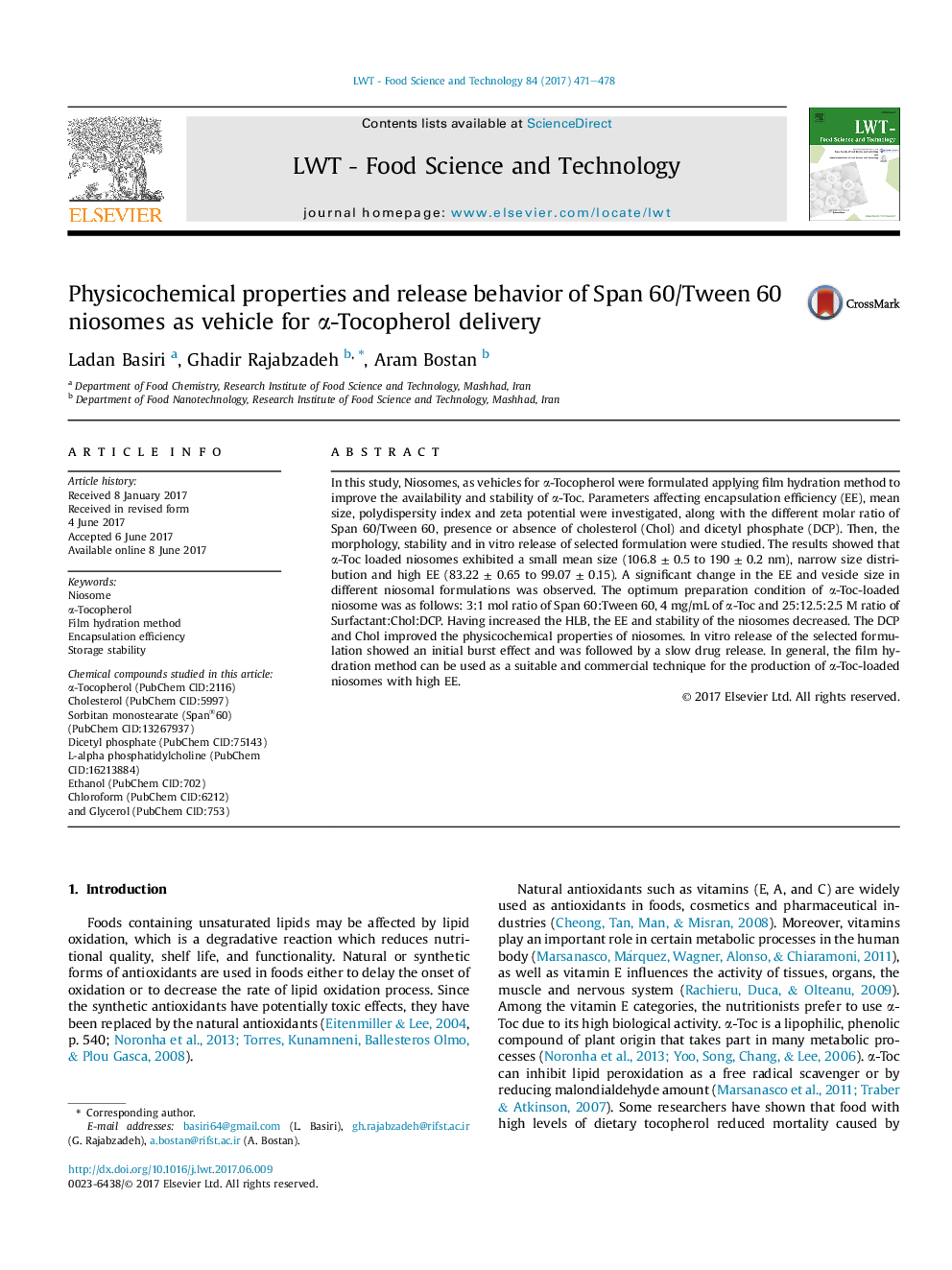| Article ID | Journal | Published Year | Pages | File Type |
|---|---|---|---|---|
| 5768966 | LWT - Food Science and Technology | 2017 | 8 Pages |
â¢Niosomes were prepared by the hydration method, have encapsulated 99.07% of α-Toc.â¢The stability of α-Toc-loaded niosome improved by the presence of DCP and Chol.â¢3:1 M ratio of Span60:Tween60 was the best mixture for encapsulation of α-Toc.â¢Î±-Toc-loaded niosome had a sustained release profile in the gastrointestinal tract.
In this study, Niosomes, as vehicles for α-Tocopherol were formulated applying film hydration method to improve the availability and stability of α-Toc. Parameters affecting encapsulation efficiency (EE), mean size, polydispersity index and zeta potential were investigated, along with the different molar ratio of Span 60/Tween 60, presence or absence of cholesterol (Chol) and dicetyl phosphate (DCP). Then, the morphology, stability and in vitro release of selected formulation were studied. The results showed that α-Toc loaded niosomes exhibited a small mean size (106.8 ± 0.5 to 190 ± 0.2 nm), narrow size distribution and high EE (83.22 ± 0.65 to 99.07 ± 0.15). A significant change in the EE and vesicle size in different niosomal formulations was observed. The optimum preparation condition of α-Toc-loaded niosome was as follows: 3:1 mol ratio of Span 60:Tween 60, 4 mg/mL of α-Toc and 25:12.5:2.5 M ratio of Surfactant:Chol:DCP. Having increased the HLB, the EE and stability of the niosomes decreased. The DCP and Chol improved the physicochemical properties of niosomes. In vitro release of the selected formulation showed an initial burst effect and was followed by a slow drug release. In general, the film hydration method can be used as a suitable and commercial technique for the production of α-Toc-loaded niosomes with high EE.
